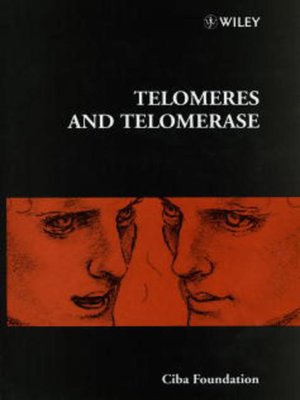
Sign up to save your library
With an OverDrive account, you can save your favorite libraries for at-a-glance information about availability. Find out more about OverDrive accounts.
Find this title in Libby, the library reading app by OverDrive.



Search for a digital library with this title
Title found at these libraries:
| Loading... |
Chairman: Sydney Brenner, 1997
Telomeres are the protective genetic elements located at the ends of chromosomes and are essential for correct chromosomal structure and function. They are not fully replicated by the conventional DNA polymerase system because DNA synthesis occurs only in the 5' to 3' direction and requires an RNA primer for initiation. Consequently, cells require a special enzyme to maintain the telomeric ends of chromosomes during each round of replication. This enzyme, telomerase, is a ribonucleoprotein that extends chromosome ends by adding short stretches of nucleotide repeats using a portion of its integral RNA component as the template. Recently, much excitement has been generated by the suggestion that telomerase, or rather the absence of telomerase and the resultant loss of terminal DNA, is a cause of human ageing. The evidence for this is twofold: the telomeres of certain cells in culture shorten during their lifespan; and immortalization of cells is associated, at least in some cases, with the maintenance of telomeres and telomerase activity. The latter observation prompted the analysis of clinical samples from patients with cancer and the demonstration that, in contrast to normal somatic cells, malignant cells possess telomerase activity. This is a unique book. Not only does it contain the latest experimental results from an international group of experts, but it also includes critical examinations of the current evidence, and discussions that attempt to identify the central and underlying concepts of this rapidly expanding field.






